|
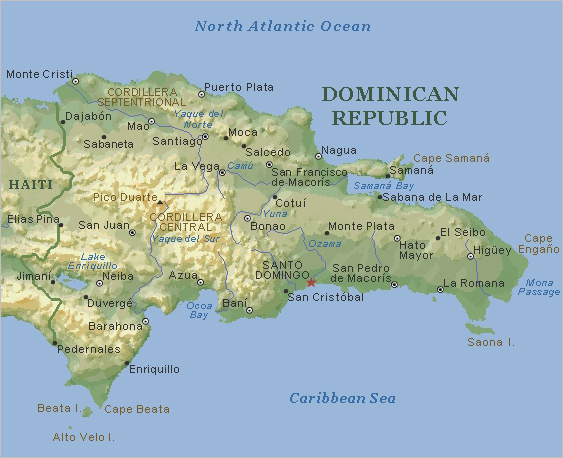
1. General Information
| Capital | Santo Domingo de Guzman |
| Population |
9,445.281 (2012) |
| Geo. Coordinates | 19 00 N, 70 40 W |
| Area | 48,442 Km². |
| Currency | Dominican peso |
| Independence | February 27, 1844 |
| Government | Democratic Republic |
| Official Language | Spanish |
| Official Religion | Roman Catholic |
| National Bird | "Cigua Palmera" |
| National Flower | Flor de la Caoba |
2. Geography
Dominican Republic occupies the eastern two-thirds of the island of Santo Domingo (also called Hispaniola) in the Greater Antilles. It is the second largest nation in the Caribbean, with a territory of 48,442 Km². It is situated in the heart of the Caribbean region, with the Atlantic Ocean to the north and the Caribbean Sea to the south. It is east of Jamaica, west of Puerto Rico, with the 70-mile Mona Passage between the two islands, and 685 miles south of the Southernmost tip of Florida.
Four almost parallel mountain ranges, covered with thick vegetation, cross the country from east to west. The largest is the Cordillera Central, which divides the country into almost equal parts. The highest peak in the Antilles, Pico Duarte (10,206 feet), is in this range. To the north is the Cordillera Septentrional and to the south is the Sierra Bahoruco.
The Valley of the Cibao (which in native language means land between mountains), located between the Cordillera Central and the Cordillera Septentrional, is the largest and most important valley due to the agricultural activity that takes place in the region. Columbus named the area The Vega Real (Royal Plain) and it is often referred to as the "Garden of the Antilles". It is the island's granary, producing fruits, vegetables, and sugar cane. Its grassy savannahs afford excellent pasturage.
The capital city, Santo Domingo, is located on the southern coast. The humid eastern section of this region contains large forests and savannas, while the western half is mostly dry and arid. It is in this region where the Lago Enriquillo (Lake Enriquillo) is located. It is a salt water lake below sea level. The area is rich in salt, bauxite and marble.
The Dominican Republic's second city and learning center is in Santiago, in the Cibao plain. This city, situated on a high bluff on the Yaque del Norte river, was founded in 1500.
The Dominican Republic has severals seaports, including Punta Caucedo, Santo Domingo, Haina, La Romana, San Pedro de Macorís, Puerto Plata, and Monte Cristi.
3. Culture
The first permanent colony of Europeans in the Western Hemisphere was established in the Dominican Republic. Santo Domingo was founded in 1496 by the brother of Christopher Columbus; the first permanent city in the New World. The colonial center of Santo Domingo was declared a UNESCO World Heritage Site in 1990.The Colonial Zone, bordered by the Río Ozama, has an impressive collection of 16th-century buildings, including palatial houses and majestic churches that reflect the architectural style of the late medieval period.
The city's most important colonial buildings include the Catedral Primada de America, which is the first Catholic Cathedral in the New World; the Alcázar de Colón, once the residence of Don Diego Colón, the son of Christopher Columbus who became viceroy of the colony; the Monasterio de San Francisco, the ruins of the first monastery in the Americas; the Museo de las Casas Reales (Museum of the Royal Houses) a museum of colonial life and the former Palace of the Governor General and the Palace of Royal Audiences; the Museo del Hombre Dominicano (Museum of the Dominican Man), with exhibits on pre-Columbian life on the island; the Museo de Arte Moderna (Museum of Modern Art), with works by Dominican artists.
Puerto Plata, on the North coast of the island, has the Museo de Ámbar, which displays unusual pieces of Dominican amber with plants, insects and small animals embedded inside them; the Parque Colón, a historic square; the Fortaleza Ozama, the oldest fortress in the New World; the Panteón Nacional, a former Jesuit now hosting the remains of various renown Dominicans; and the Iglesia del Convento Dominico, the first convent in the Americas.
Art, music, and literature developed in part along Western patterns, with a strong African cultural component. The African heritage is especially notable in the country's folk culture, particularly the music. The best representation of the blend between the Spanish and African traditions is the popular national song and dance, the merengue. Merengue music can be heard everywhere on the island, and every summer Santo Domingo holds a two-week merengue festival at which the world's finest merengue bands and merengue dancers appear.
In 2005, UNESCO also proclaimed Cocolo Dancing from the Dominican Republic a Masterpiece of the Oral and Intangible Heritage of Humanity. The Cocolo dancing drama tradition developed among Caribbean English-speaking migrant workers, who came to the Dominican Republic in the mid-nineteenth century. The term Cocolo was originally a term for migrants working on the British sugar plantations of the island. These migrants set up their own churches, schools, benevolent societies and lodges providing mutual assistance and organizing collective cultural events, such as the annual performances of the Cocolo Dancing Drama in the city of San Pedro de Macorís.
Among the country's most beloved writers is Salomé Ureña de Henríquez, who is considered a national poet. She lived in the second half of the 1800s and in 1881 organized the Instituto de Señoritas, the first Dominican center of higher education for women. Her two sons, Pedro and Max Henríquez-Ureña, became distinguished Latin American writers and thinkers. Other Dominican writers include Gastón Fernando Deligne, a modernist poet of the late 1800s and early 1900s; Fabio Fiallo, author of delicate love lyrics in the early 1900s; Manuel de Jesús Galván, author of Enriquillo (1882), a historical novel based on an early Native American revolt against the Spaniards; and Manuel del Cabral, a versatile 20th-century poet whose work showed his strong sympathies with the country's impoverished blacks.
Juan Bosch, president of the republic in 1963, was also one of the most distinguished Dominican writers of the mid-20th century, a well known as a novelist, short-story writer and essayist. Joaquín Balaguer, the republic's president from 1986 to 1996, was also an accomplished writer on many topics. Much of the best-known Dominican writing today comes from Dominicans who have emigrated. Julia Alvarez, who moved with her family from the Dominican Republic to New York City at the age of 10, has written about the collision of the two cultures in such works as the novel How the Garcia Girls Lost Their Accents (1991) and the children's book How Tía Lola Came to Stay (2001).
4. History
In essence, Santo Domingo's history is the history of the Europeanization of the Americas.
Before the arrival of Christopher Columbus in 1492, the Taíno Indians populated the island of Hispaniola, including the part now occupied by the Dominican Republic. At that time, a chieftain or cacique ruled the island through a complex, centralized government, a fact completely lost on the Europeans, who dismissed the natives as "savages." The Taíno civilization effectively ended on October 12, 1492, with the arrival of Christopher Columbus, who declared Hispaniola "the most beautiful land that human eyes have ever seen."
Throughout its first century, Santo Domingo was the launching pad for much of the exploration and conquest of the New World. The expeditions that led to Ponce de Leon's "discovery" of Puerto Rico, Hernan Cortes' conquest of Mexico and Balboa's sighting of the Pacific Ocean all started from Santo Domingo.
In 1586, the famous English pirate Francis Drake invaded and pillaged Hispaniola. This weakened Spanish dominion over the island, and for more than 50 years all but the capital was abandoned and left to the mercy of the pirates. In 1655, the French invaded the West portion of the Island. After several treaties and forced annexations, the portion of the island controlled by Santo Domingo was reduced to less than half. Later, in 1822, the Haitians, commanded by Toussaint Louverture, took over the entire island, and the island's Spanish-speaking residents had to fight for their lost independence. Finally, on February 27, 1844, the Spanish part of the island regained its independence after 22 years of Haitian rule thanks to a group of patriots headed by Juan Pablo Duarte, Francisco del Rosario Sánchez and Ramón Matías Mella, being the Puerta del Conde the main scenario of this relevant event.
After the independence was achieved, and the Dominican Republic created, various political factions struggled for control of Santo Domingo and skirmishes continued along the newly-created border with Haiti. In 1861, Santo Domingo annexed itself to Spain. This lasted for four years and culminated with the “Restoration” of Independence. After that, Santo Domingo was governed by several autocrats, most notably by dictator Rafael Leonidas Trujillo (who took power after the 1916-1924 occupation by the United States), which lasted from 1930 to 1961 and ended with the execution of the dictator. The early 60s were again a period of unrest, marked by a coup, revolts and second invasion by the United States.
President´s have been elected by a democratic voting process since 1966.
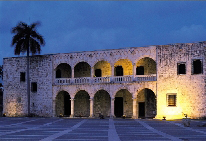
Alcazar de Colon |
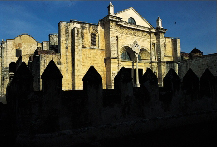
Cathedral of the Americas |
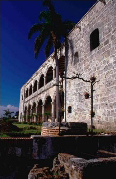
Alcazar de Colon | 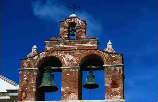
Detail of the Bell Tower of the
Cathedral Of the Americas,
Colonial Zone, Santo Domingo |
5. Government
www.presidencia.gob.do
Country Name:
Conventional long form: Dominican Republic
Conventional short form: DR
Local long form: República Dominicana
Type of Government: Representative Democracy
Administrative Divisions:
Capital City of Santo Domingo (National District) and 31 provinces : Azua, Baoruco, Barahona, Dajabón, Duarte, El Seibo, Elías Pina, Espaillat, Hato Mayor, Hermanas Mirabal, Independencia, La Altagracia, La Romana, La Vega, Maria Trinidad Sánchez, Monseñor Nouel, Monte Cristi, Monte Plata, Pedernales, Peravia, Puerto Plata, Samaná, San Cristóbal, San José de Ocoa, San Juan, San Pedro de Macorís, Sánchez Ramírez, Santiago, Santiago Rodríguez, Santo Domingo, Valverde.
Independence:
27 February 1844 (Independence from Haiti)
16 August 1865 (Restoration of Independence from Spain)
Constitution:
26 January 2010
Legal System:
Based on French civil codes; Criminal Procedures Code modified in 2004 to include important elements of an accusatory system; accepts compulsory ICJ jurisdiction.
Suffrage:
Universal suffrage after 18 years of age; married people regardless of age. Note: members of the armed forces and national police cannot vote.
Executive Branch:
Chief of State: Danilo Medina Sánchez (since August 2012); Vice
President Margarita Cedeño de Fernández (since August 2012).; note - the president is both the chief of state
and head of government.
Head of Government: Danilo Medina Sánchez (since August 2012); Vice President
Margarita Cedeño de Fernández (since August 2012).
Cabinet: Cabinet nominated by the President. Elections: President and Vice
President elected on the same ticket by popular vote for four-year terms
election. Election results: Danilo Medina Sánchez elected President; percent of
vote - Danilo Medina Sánchez (PLD) 51.21%; and Hipólito Mejía Domínguez (PRD)
46.95%.
Legislative Branch:
The bicameral National Congress (Congreso Nacional) consists of two houses, the Senate and the Chamber of Deputies. .The Senate is composed of 32 senators who represent the Dominican provinces and the National District, while the Chamber of Deputies has 190 members apportioned among the provinces by their population; seven (7) of these deputies represent Dominicans living abroad.
The Senate and the Chamber of Deputies have equal power in the legislative process. However, while the Senate is empowered to legislate on treaties and presidential appointments, the revenue-raising bills must originate in the Chamber of Deputies which also has the power of impeachment.
The meeting of the two chambers is called Asamblea Nacional.
The most recent legislative election was held in 2010. The next one is scheduled for 2016, with subsequent elections to be held every four years.
Judicial Branch
The highest court in the Dominican Republic is the Constitutional Court (Tribunal Constitucional). It was created by the Constitution drafted in 2010 to ensure the supremacy of the Constitution, the defense of the constitutional order, and the protection of fundamental rights. It is composed by 13 judges appointed by the National Magistrate Council to serve a nine-year term.
The Supreme Court (Suprema Corte) is in charge of administrating justice, including guaranteeing the rights, social peace and the development of democracy within a legal framework characterized by equality, honesty, transparency, independence and excellence.
It is comprised of 17 magistrates, chosen by the National Magistrate Council, who are subject to an evaluation every 7 years.
Political Parties:
The main political parties in the Dominican Republic are the Social Christian Reformist Party (PRSC), the Dominican Liberation Party (PLD) and the Dominican Revolutionary Party (PRD). A further 23 participated in the 2012 elections, achieving voting totals ranging from 0.11% to 5.87%. Political parties are publicly funded.
6. Economy
The Dominican Republic is a Caribbean representative democracy that enjoyed strong GDP growth until 2003. Although the country has long been viewed primarily as an exporter of sugar, coffee, and tobacco, in recent years the service sector has overtaken agriculture as the economy's largest employer due to growth in tourism and free trade zones. Growth turned negative in 2003 with reduced tourism, a major bank fraud, and limited growth in the US economy (the source of about 80% of export revenues), but recovered in 2004 and 2005.
With the help of strict fiscal targets agreed in the 2004 renegotiation of an IMF standby loan, President Fernandez has stabilized the country's financial situation. Although the economy continues to grow at a respectable rate, unemployment remains an important challenge. The country suffers from marked income inequality; the poorest half of the population receives less than one-fifth of GNP, while the richest 10% enjoys nearly 40% of national income. The Dominican Republic's development prospects improved with the ratification of the Central America-Dominican Republic Free Trade Agreement (CAFTA-DR) in September 2005.
7. Baseball
The Dominican Republic is very proud of its contributions through what is well-known as this Nation’s greatest pastime. Baseball first arrived in the Dominican Republic around 1890 as an import from Cuba. As the quality of local play improved, by the 1930s, the Dominican Republic hosted the top stars from Cuba and the Negro Leagues from the U.S. for all-star and exhibition games.
Baseball has played a transcendental role throughout the history of both the Dominican Republic and the United States, and the sport itself has endured but overcome its own difficult challenges.
After the debut of Jackie Robinson in 1947 as the first African American in the Major Leagues, a group of Dominicans, now highly regarded in the Dominican Republic as pioneers, were recruited to play and showcase their skills in the United States. The first Dominican to play Major League Baseball in the United States was pitcher Ozzie Virgil, who joined the Detroit Tigers in 1958. Dominican pitcher Juan Marichal, who played for the San Francisco Giants, earned the nickname "Dandy Dominican" for his high leg kick. These men, along with Felipe and Jesus Rojas Alou and Manny Mota, are modern day heroes. The group excelled in their performance while overcoming everyday struggles with the language barrier and a racially charged society. Juan Marichal´s induction to the Hall of Fame in 1983 was a fitting recognition of this long hard struggle.
Although born in the United States, infielder Alex Rodriguez grew up in the Dominican Republic, where his father was a professional baseball player. Sammy Sosa was born in San Pedro de Macorís, which calls itself "The city that has given the most Major Leaguers to the World." Since 1956, a total of 604 Dominicans have played in the Major Leagues.
The sport first turned competitive in the 1920s when baseball games began being played against neighboring countries. This competitiveness encouraged the establishment of the Dominican Baseball League. Four baseball teams were formed: Tigers del Licey and Leon del Escogido, both from Santo Domingo, Estrellas Orientals of San Pedro and the Las Aguilas in Santiago. The popularity of professional baseball in the Dominican Republic ascended throughout the following years, but came to a halt in 1937 due to a financial downturn in the country. Meanwhile, amateur baseball evolved with Dominican teams competing with those from the U.S. and other Caribbean countries. The hiatus finally ended in 1951 with the return of professional baseball. Then came Dominicans' idea of hosting amateur baseball in the summer and professional baseball during the winter months, therefore giving the Caribbean the "home of winter baseball" title.
Today there are two additional teams in the country's professional baseball league: the Azucareros del Este from La Romana and the Gigantes del Cibao. Each season extends from the end of October through February, with the winner advancing to the Caribbean Series. At the series, the winning team of the Dominican Republic league plays against the champions of the Mexican, Venezuelan and Puerto Rican leagues.
The popularity of the Dominican Republic in Major League Baseball is unchallenged. We have
the highest total of players of any country outside the United States. On 2014 season’s Opening Day, 83 of the 856 listed players were born in the Dominican Republic --10.0%--. For example, one team has seven Dominican players, while a couple of others have six apiece. Currently, 25 percent of the players on minor league squads hail from the Dominican Republic.
We also export our athletic talent to many other countries like Japan, Mexico, Korea and Taiwan, which amounts to more than 200 professionals playing at Baseball’s highest level. Japan alone has around 70 Dominican players. And, of course, the Dominican Republic just became world champion after outlasting 14 international teams to win the World Baseball Classic. This victory has been another milestone in helping put the Dominican Republic on the global map and raise the profile of our country on the international scene.
Other highly recognized Dominicans in Major League Baseball are Pedro Martínez, David Ortiz, Albert Pujols, Alex Rodríguez, Manny Ramírez, Vladimir Guerrero, Miguel Tejada, George Bell, Pedro Guerrero, Tony Peña, Alfonso Soriano, and Rafael Soriano.
To the Dominican people, baseball is not only a sport, but a way of life. While some players advance professionally into the United States, others continue to compete in the Dominican Republic, and countless more play for fun. Regardless of where Dominicans play baseball, the sport will always be an integral part of the country's culture.
For more information go to www.republicofbaseball.com
8. Golf
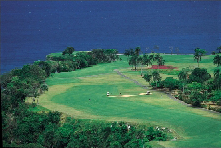
The Dominican Republic is one of the premier golf destinations in the Caribbean. Thanks to the tropical climate play is possible all year-round.
The majority of the golf courses are found along the coast in the country's burgeoning resorts, each with its own distinct identity, carefully designed with the coastline and hills incorporated. Over 25 designer courses, set amidst breathtaking coastlines with mountain backdrops and lush green fairways, await in our tropical paradise and more promising courses are soon to be opened.
www.casadecampo.com
www.golfguide-do.com
9. Flag
The Dominican Flag is divided into four sections by a white cross. The upper left section is dark blue; the lower left is red. On the right side of the cross the colors are reversed. The coat of arms appears in the center of the cross, and reads "God, Fatherland, and Liberty".
10. Fauna
Due to its isolation over millions of years large mammals are not endemic on Hispaniola. Among the few mammals native of the island are bats, the bottlenose dolphin, Antillean Manatee (Trichechus manatus manatus) and two small land animals in danger of extinction, the Solenodon and the Hutia.
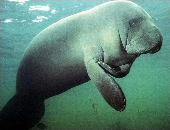 |
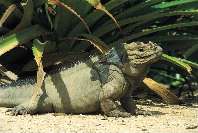 |
| Antillean Manatee |
Rhinoceros Iguana |
Cow, pigs, donkeys and horses were all imported by the Spaniards. The European also brought mice, rats and cats on their ships. Mongooses, originally imported from India to combat the rats, have become a pest. Eighteen species of bats have been found in the country. Bird life is very rich on Hispaniola and 254 species (22 endemic) are known, about half of which live in the aquatic environment. Two indigenous birds that are now difficult to find are the Hispaniolan parrot and the perico.
Among the most famous local reptiles (1411 species with 83% of them endemic) are the American crocodile, the rhinoceros iguana and the ricard iguana. All three are endangered species but can often be seen in Isla Cabritos National Park. All snakes on the island are nonpoisonous. Frogs, mainly tree frogs, are abundant and can be quite noisy, living on palm and banana trees as well as telephone posts. Lizards are seen everywhere and 21 different species are known. The lizards all have in common a thin, often colorful skin along their throats, which is blown up like a balloon when they are threatened.
11. Flora
The tropical climate of Hispaniola and the variations in elevations, rainfall and soil have produced a variety of plant habitats, ranging from dry areas to coniferous forests in the mountains. About 36% of the 5,600 plant species on the Island of Hispaniola are endemic.
The lush vegetation is found in the humid forests of the eastern mountain region. Local mahogany is abundant and was used in the construction of the first cathedral in 1540. Other native trees are the ceiba (silk cotton tree) known for its enormous size and long life (up to 300 years), Dominican magnolia, the bija and mammon tree. There are tree ferns and numerous bromeliad, orchids in the country's forests, such as Sierra de Bahoruco National Park. Higher mountain zones are dominated by the creolcan pine tree, while the desert and semiarid areas dominated by cacti agaves terrain. For more information go to www.agricultura.gov.do
12. Natural Resources
country abounds in gold, silver, amber, larimar, ferronickel, bauxite, coal, tin, marble, salt, gypsum, and stone.
13. Climate
Maritime tropical averaging 78 degrees Fahrenheit and ranging from 73 degrees in winter to 82 degrees in summer, the hottest month is August, the coolest is January. Trade winds keep the air cool and fresh; temperatures can drop up to 30 degrees in the mountains. Rains are more likely in May/June and August to October. Average monthly temperatures in the Dominican Republic (in degrees Fahrenheit) are as follows:
Tempertures in 2006
|
Jan |
Feb |
Mar |
Apr |
May |
Jun |
Jul |
Aug |
Sep |
Oct |
Nov |
Dec |
| Min |
68 |
66 |
67 |
69 |
71 |
72 |
72 |
73 |
72 |
72 |
70 |
69 |
| Max |
84 |
85 |
84 |
85 |
86 |
87 |
88 |
88 |
88 |
87 |
86 |
85 |
14. Major cities
The capital is Santo Domingo de Guzman, the oldest and largest city in the Caribbean with a land area of 144 square miles and a population of over 2.2 million (1990); Santiago de los Caballeros is second with 690,548; San Cristóbal 409,381; La Vega 335,140; Duarte 272,277; San Pedro de Macorís 212,886; Puerto Plata over 255,061; La Romana 158,132; La Altagracia (Higüey) 112,396; Samaná 49,537.
15. Museums
The Dominican Republic’s national museums celebrate all aspects of the Dominican life, many treasured from the past and many that impact the present. The museums are located throughout the whole island. In Santo Domingo one can find the museums of Dominican Man, Natural History and Geography, Dominican Family, Royal Houses (colonial), as well as the Pre-Hispanic Art Museum, the Viceroy Museum and Alcazar, the Museum of Antique Coins, the Gallery of Modern Art, and the Larimar Museum. Walking the streets of Santiago you could see the Tomás Morel Folklore Museum and the Cultural Center Eduardo León Jiménez. Puerto Plata hosts the Amber Museum and in Altos de Chavón you can visit the Archaeological Museum.
For more information about the country and it´s attractions, please visit:
http://www.godominicanrepublic.com/
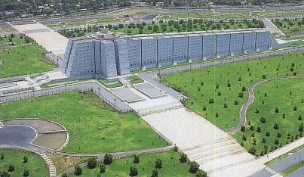 |
| Columbus Lighthouse |
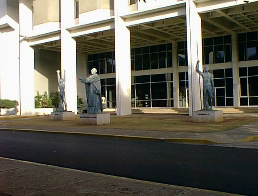 |
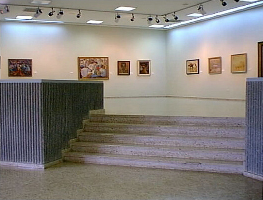 |
| Museum of the Dominican Man |
Gallery of Modern Art |
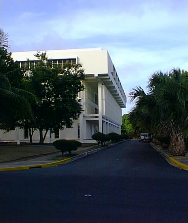 |
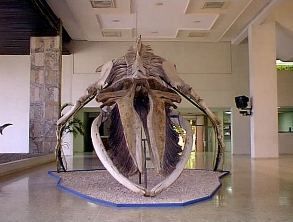 |
| National Library |
Museum of Natural History |
16. Language and Religion
Spanish is the official language of the Dominican Republic. English is widely spoken especially in tourist areas. Traffic signs and most menus in restaurants are in Spanish. A French dialect is heard along the Haitian frontier. Roman Catholicism is the dominant religion. There is a small Protestant community and a small percentage of the people follow African animist religious beliefs
17. Education
The Dominican Republic provides free compulsory education to children between the ages of 5 and 13. Some 85 percent of the population aged 15 or older is literate. In the 2000 school year 1.4 million pupils attended primary schools. While virtually all children attend primary school, only 59 percent of secondary school-aged children were enrolled.
The Autonomous University of Santo Domingo, the oldest university in the western hemisphere, was authorized in 1538, although classes did not begin until 1558. Four faculties were established, those of philosophy, medicine, theology, and jurisprudence, and the university attracted students from Mexico, Cuba, Venezuela, and elsewhere in Central America. The institution was originally called the Universidad de Santo Tomás de Aquino and was run by Dominican friars. It now occupies a modern campus known as University City.
The Catholic University Madre y Maestra was founded in Santiago in 1962. Other universities include Pedro Henríquez Ureña National University (1966) and Eugenio María de Hostos University (1981), both in Santo Domingo; Northeastern Catholic University (1978) in San Francisco de Macorís; and Central University of the East (1970) in San Pedro de Macorís. Art and music are taught in the national School of Fine Arts, and there is also a National Conservatory of Music.
18. Holidays in the Dominican Republic
| Jan. 1st. | New Year's Day |
| Jan. 6th. | Epiphany |
| Jan. 21st. | Virgin Altagracia |
| Jan. 26th. | Birthday of Juan Pablo Duarte (Founding Father of the Nation) |
| Feb. 27th. | Independence Day |
| Variable | Good Friday |
| May. 1st. | Labor Day |
| Variable | Day of Corpus Christi |
| Aug. 16th. | Restoration of Independence |
| Sept. 24th. | Virgin Mercedes |
| Nov. 6th. | Constitution Day |
| Dec. 25th | Christmas Day |
|